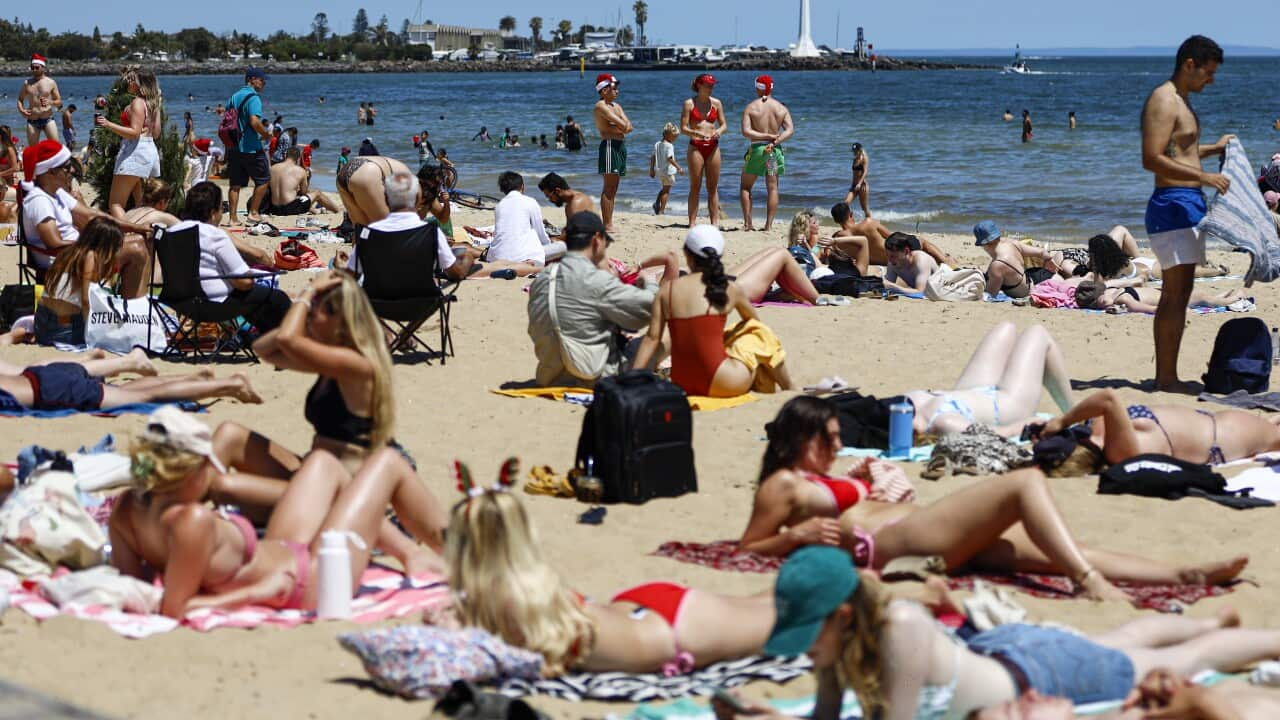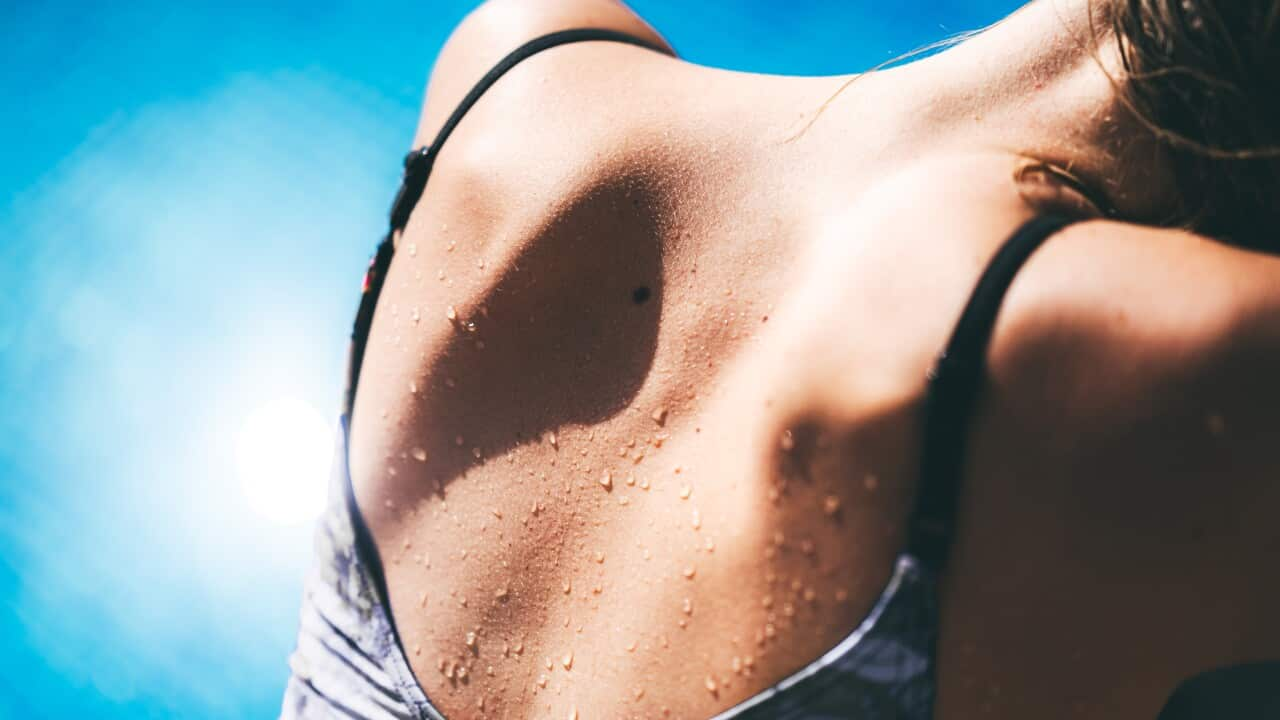Key points
- Tanning is trending on TiKTok — and it has experts concerned.
- They say there's no such thing as a safe tan and just 10 minutes in intense sunlight can cause skin damage.
- It's also been a decade since commercial solariums were banned in Australia, but a new device is causing concern.
Commercial solariums were banned in Australia a decade ago, but many Australians are still tanning, and now a "disturbing" trend has alarmed experts.
Suntanning trends with the hashtag #sunburnttanlines have garnered over two million views on TikTok this summer, sparking fresh warnings that there's "no such thing as a safe tan".
There are also concerns over the rise of modified sunbeds called collariums, which are being promoted as a healthy alternative to solariums.
How many Australians are tanning?
An Australian Bureau of Statistics survey, funded by the Cancer Council and undertaken in late spring and summer 2023-24, found 9.4 per cent of people aged 15 years and over had attempted to suntan in the past 12 months.
Professor Anne Cust, chair of the Cancer Council's National Skin Cancer Committee, said that's an estimated two million people.
She said Cancer Council researchers found half of Australians were using three or more forms of sun protection when exposed to sun during peak UV-radiation periods, and young people were less likely to use adequate sun protection.
LISTEN TO

Tan-line social media trend triggers renewed calls to be Sun Smart
SBS News
08:16
There are five forms of sun protection recommended by the Cancer Council.
They are wearing protective clothing, using broad-spectrum, water-resistant SPF-50 or SPF-50+ sunscreen, wearing a broad-brimmed hat, seeking shade and wearing sunglasses.
'Tanned skin is damaged skin'
Some on social media have spoken of tan lines as being desirable and "cute", while others have called out such discourse as dangerous.
"We were a little disturbed to see this trend on TikTok of young people, particularly the girls, deliberately going out and getting suntan lines," researcher and health pathologist Andrew Dettrick said.
Dettrick, who is an adjunct associate professor at the University of the Sunshine Coast, said the government and the Cancer Council had launched a campaign called End the Trend to combat this issue.
"We have to try to get back to the understanding that there is no such thing as a safe tan. Tanned skin is damaged skin.
"UV radiation causes melanoma and other cancers, eye damage, and also premature ageing. I think that's a message that seems to be lost among these young people."
Concern over collariums
This January marks a decade since commercial solariums were banned in Australia.
Despite the ban, Australian culture continues to glamorise a suntan, and commercial tanning facilities are making a comeback.
They feature modified sunbeds called collariums, or collagen beds, and have been recently promoted as a healthy alternative to solariums despite emitting ultraviolet UV radiation.
Cust said such facilities appeared to be rebranded solariums.
"(There's) a device that you lie in, and it emits UV radiation, predominantly UVA radiation, which we know does penetrate the skin, causes DNA damage, actually breaks down collagen and causes ageing, but these devices are often marketed as being healthy.
"We know that devices emitting UV radiation for the purpose of tanning is not healthy."

Exposure to UV radiation can cause skin damage (including skin cancer), eye problems, immune system damage, and premature aging. Source: SBS News
"Solariums work by producing an artificial and very intense source of UV radiation. It can be as high as 30 or 40 UV index in the commercial solarium," Dettrick said.
"To put that in context, on a nice bright sunny day here in the Sunshine Coast where I live, in the middle of summer the UV index will be 13 or 14. And you can get significant skin damage, sunburn, after less than 10 minutes of exposure to that intense sunshine."
Also known as sunbeds or tanning beds, these are classified by the International Agency for Research on Cancer in the highest risk category as Group 1 and carcinogenic to humans.
Prior to the commercial solarium ban, it was estimated that each year more than 2,800 skin cancer cases and 43 melanoma-related deaths were attributable to solarium use.
'Get to know the lumps and bumps on your body'
Overexposure to UV radiation causes up to 95 per cent of melanomas, the deadliest form of skin cancer.
Dettrick said about one in 50 skin cancers are melanoma.
He said many people are unfamiliar with non-melanoma skin cancers, which include basal cell carcinoma (BCC) and squamous cell carcinoma (SCC).
The rate of non-melanoma skin cancers has almost doubled in the last 20 years.
"Can you imagine if the number of deaths from any other type of cancer had doubled in only 20 years? I think it would be front-page news every day until something is done about it," Dettrick said.
He said people need to learn how to identify dangerous changes on their skin.
"Get to know the lumps and bumps and spots on your own skin and regularly check your skin for any changes, looking out for the ugly duckling. A spot that doesn't look right to you or one that you know has changed."
BCCs will tend to look like a little raised pearly lump, he said, while SCCs will typically be flat or raised and scaly, and melanoma is usually a pigmented spot.
Skin checks can be reimbursed on Medicare and provided by GPs.



